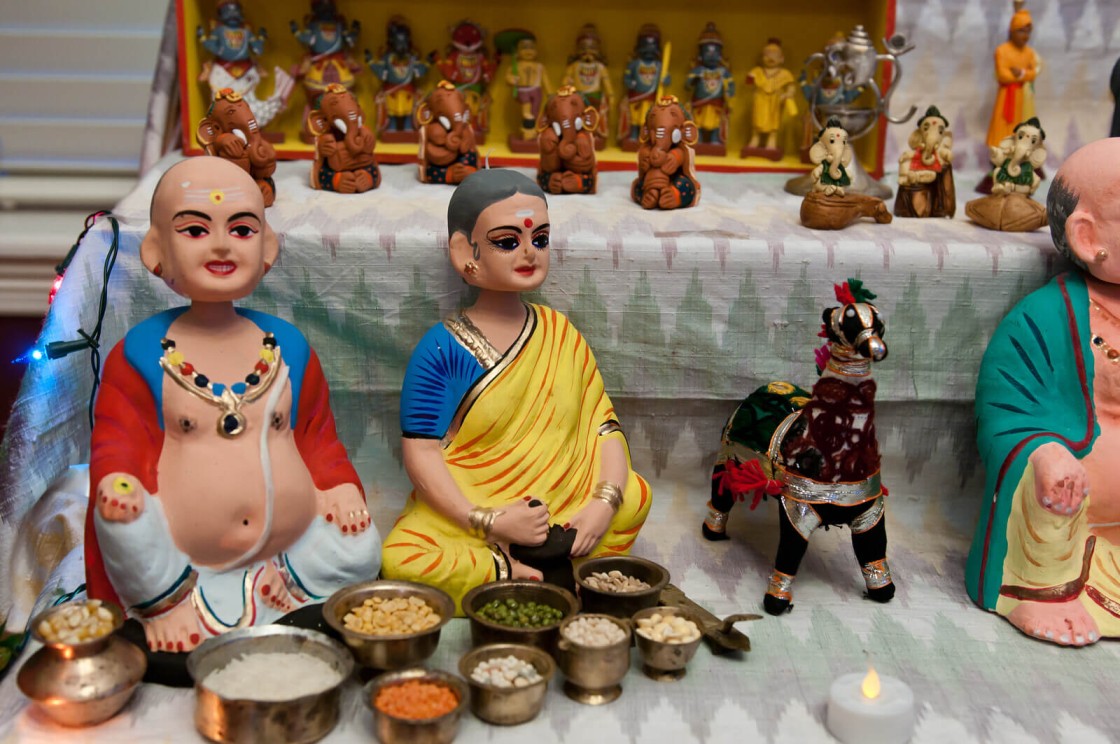Last updated on October 16th, 2022 at 05:07 pm
The holiday of Navratri, which honors the Divine Mother, is observed in various ways across India. Durga Puja marks the holiday in West Bengal, whereas Ramlila marks the festivities in the Indian capital, Delhi. It is celebrated in Gujarat by performing the Garba dance, whereas, in South India, it is commemorated by the creative exhibition of golu dolls.
Golu Dolls depicting various gods, goddesses, men, animals, and children are placed on a steps-like set-up during the festival in Tamil Nadu, Karnataka, and Andhra Pradesh. Bombe Habba means Doll Festival in Kannada, and Bombe Golu means Divine Presence in Tamil, while Bombe Habba means Doll Festival in Telugu.
What are Golu Dolls & Why is the importance of Golu Dolls?
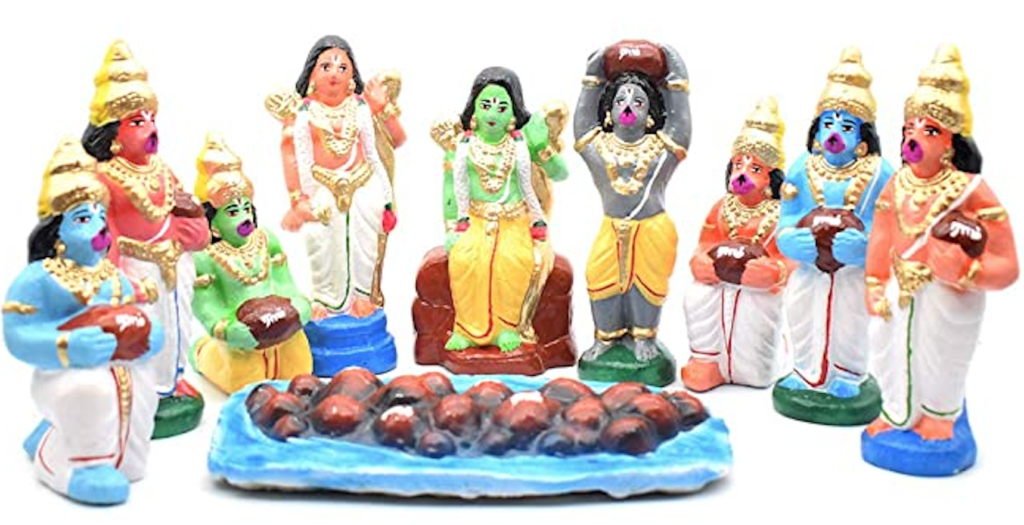
The Long and Rich History of Golu Dolls
There is no narrative concerning the kind of toys considered divine or thought to symbolize God. For the nine days of Navaratri, every toy/figurine given a place in the Golu Padi is regarded as sacred and revered. During Navaratri, it is customary for children to donate their toys to the Golu Padi, where they are then exalted and adored before being returned to their original status as playthings.
When they see their favorite toys on display but aren’t permitted to touch them, these youngsters face a difficult challenge in Navaratri: Consequently, in homes with extremely young children, golu may be briefly withheld and then resumed after the children have grown up.
Furthermore, adding a new doll of any size to the golu collection each year is customary. As a result, the craft can better survive and provide a steady stream of money to its practitioners. Since gods must always be shown as healthy and prosperous, deteriorated or damaged idols seldom appear in Golu dolls.
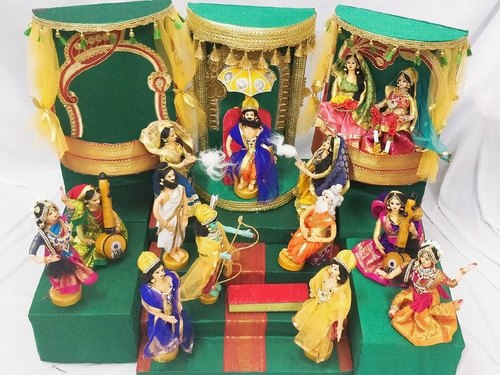
However, this regulation is not strictly adhered to and may change depending on the Golu’s keepers. Golu Dolls online that have faded or are damaged may be repainted, decorated with garlands, jewelry, or fabric, or repaired. The only exception to this rule is when a doll is so badly damaged that it cannot be used as golu in any way. Golu bommai restoration has lately become a lucrative business.
How and When did the use of Golu Dolls start in Indian Tradition?
Older dolls often have better face characteristics, posture, jewelry, and outfits than newer ones. Keeping dolls in good condition is more difficult and time-consuming. Hence it’s more costly in the long run. However, most of the tradition’s adherents are nostalgic about the dolls they’ve passed down from generation to generation. It’s not uncommon for a Tamil bride’s jewelry to end up in her family’s golu display after her wedding. For young children, the marapachi dolls are often presented as part of their first set of toys. The youngster is claimed to benefit from the curative virtues of red sandalwood while licking and chewing the dolls fashioned from it.
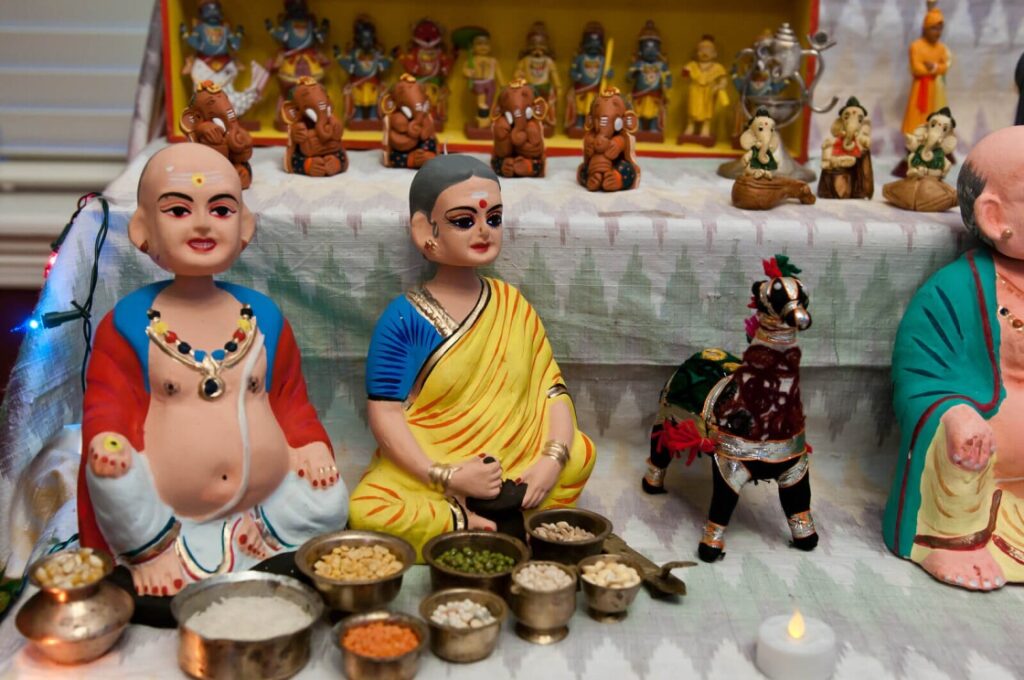
Therefore, unique golu dolls are prized by their owners, who treat them as heirlooms and preserve them as reminders of a bygone era. On the eve of the tenth day of the celebration, all the dolls rest from their otherwise upright posture by singing lullabies to the gods. The dolls are carefully wrapped in newspapers and fabric on the eleventh day to keep them safe until the next Navaratri. To prevent them from colliding with one another, they are carefully arranged. The dolls are protected from dampness and humid situations that might harm their gloss, color, or shape by taking adequate measures.
Traditions and Popular Myths about Golu Dolls and Festivals
There are never any shortages of things to celebrate in a nation as vibrant as India. Golu – the festival of dolls – is an intriguing and enjoyable holiday to have a look at as we gear up for another frantic festive season and prepare for Id, Diwali, Christmas, and New Year.Every area of India has its own distinct culture and traditions. Indians in Tamil Nadu, Kerala, Malayalam, and Telugu celebrate Navratri with a toy festival called Golu, or Kolu dolls, Bombe Habba, Bomma Gullu, or Kolu bommai.
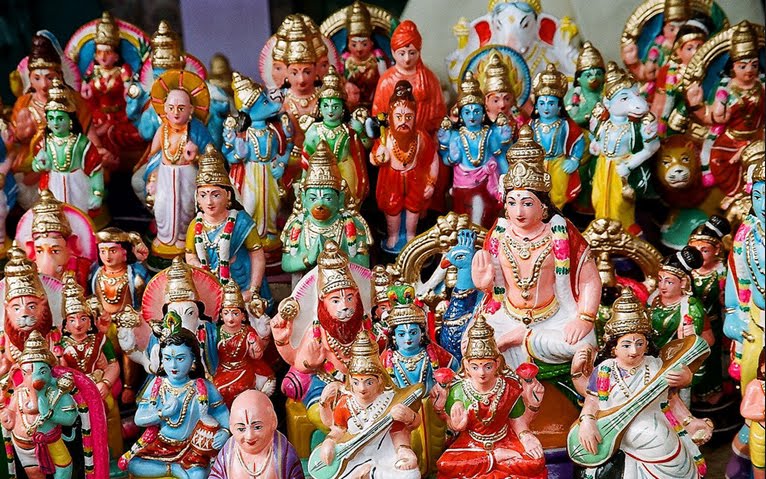
People display a variety of old Golu dolls for sale on stairs in odd numbers as part of a ceremony (7, 9 or 11). To celebrate Vijayadashmi, these dolls are decorated for nine days before one is put to sleep, and the others are stored for the next year. The “Marappacchi” dolls, a pair of man and female dolls, are traditionally the first to be placed on the Golu. Adolescents were taught about gender morphology by this practice in the past.
The origin of Golu is the subject of various legends. One of them has a direct bearing on agriculture. According to legend, Golu was celebrated to spur demand for clay products, which were then used to help de-silting irrigation canals. Golu Bommai online represents feminine strength and the idea that everything in the universe has a single source. Durga begged all the gods and goddesses to transfer their power to her to defeat an evil demon. This is another mythical narrative behind this event. Then they all stopped moving and looked like statues. The reason for this celebration is to honor those who made the ultimate sacrifice. Traditionally, the event was a time for ladies to socialize with their neighbors and other women in the community. They shared various gifts from Kumkum to fruit, flowers, bangles, and more with each other.
Beautiful Navarathri Golu Ideas and Their Significance
Introduction about how Navratri is celebrated by dolls
An annual nine-day fall festival, Navaratri celebrates female strength. Even though the holiday is celebrated throughout India, the southern states’ longstanding custom of ‘Golu’ distinguishes the festivities there.
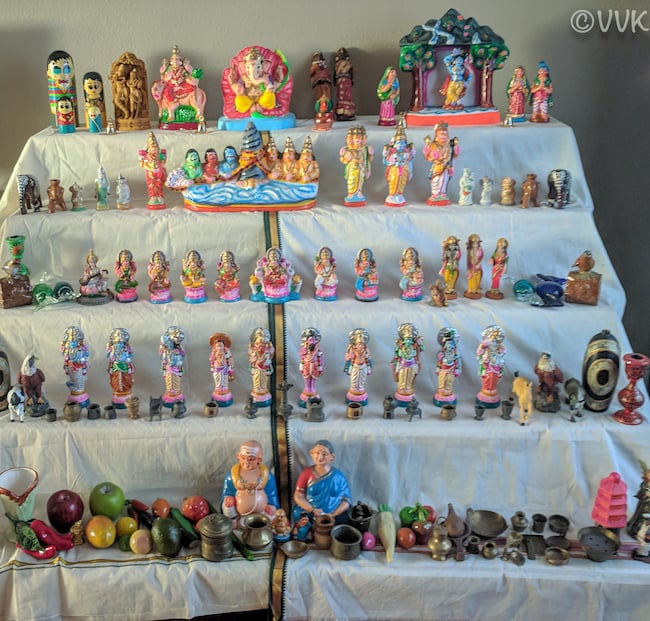
An example of this would be the exhibition of figurines of human characters, as well as those of deities during Navaratri (Tamil: “kolu ” or “golu”). Gombe Habba (Kannada) and Bomma Koluvu (Telugu) are two other common names for this dish in the southern Indian states of Tamil Nadu, Karnataka, and Andhra Pradesh (Telugu).
The Navratri golu dolls and miniatures put on the stairs represent the spiritual evolution of human beings, as per the tradition. Kolu is derived from the Tamil word ‘Veetriruthal’, which signifies the presence of kings and queens at the court of the monarch or queen. The concept of the presence of gods and goddesses amid their devoted followers and saints is included in the word’s definition.
Popular Golu Dolls Designs & Arrangement Ideas
Step-by-step arrangement of human figurines is shown at the bottommost level of the Navratri golu dolls‘ stacks. Similarly, the Chettiyar couple exchanging sugar and pulses portray human occupations and are surrounded by rural or city life and a marriage scene on the same step. The dolls of the Chettiyar people symbolize the importance of commerce.
The first few bommala koluvu steps of the staircase are inhabited by Hindu saints and sage dolls, while Hindu gods and goddesses occupy the last few steps. The Kalash, also known as the kalasam, is placed in the center because it symbolizes dedication, regarded as the focal point.
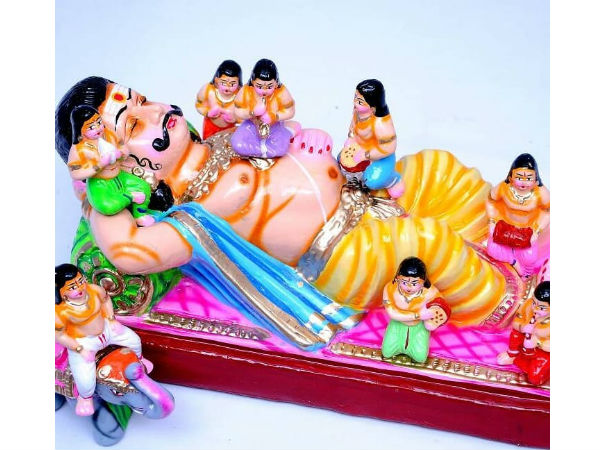
Scholars believe the custom may stretch back hundreds of years despite historians’ assertions to the contrary. It’s possible, though, that this custom is connected to the centuries-old practice of taking a Saraswati statue through Padmanabhapuram and Thiruvananthapuram during Navaratri in procession.
Navratri golu dolls constructed of wood kinds such as sandalwood or redwood have traditionally adorned the exhibit in both male and female forms. Marapachi dolls, made from wood, are traditional wedding presents for newlyweds because of their curative properties. Dolls of various types have now made it into the exhibit, changing the original intention. There are specific dussehra dolls that
The many Navratri Golu themes also give the ritual an intriguing and perceptive touch. Whether it’s the ten avatars of Lord Vishnu or ancient epics like the Ramayana and Mahabharata, the themes are ripe for interpretation. Kabali and Pettai are now included in the same canon as Vishnu’s Koorma avatar and Sundarakandam from the Ramayana. Displaying political killings isn’t uncommon.
How to Place and Remove Navratri & Dasara Golu Dolls?
Importance of placement of the dolls during festivals?
During the festival, the Navaratri dolls (Golu) put on a display of old texts. Narratives from the Ramayana, Mahabharata and Dashavatara are connected to the Golu. As a result, this is the perfect time of year to reflect on your childhood memories of listening to your grandparents tell tales from Greek and Roman mythology. As a bonus, Dasara dolls are often passed down from generation to generation. This helps people keep their origins, traditions and rituals alive.
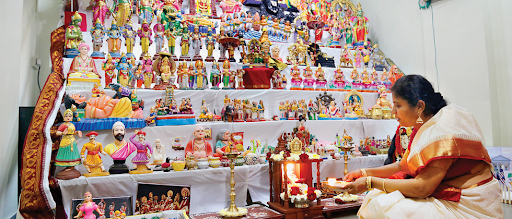
Navaratri’s Golu Padi (stage) building is one of the most important aspects of the festival. The Golu-steps are available for purchase along with dasara dolls online shopping, but you can also use boxes of different sizes to produce a makeshift one. Depending on the size of your Golu collection and where you want to put them, the steps should range from three to eleven. Cover the stairs with a white cloth so that the Dasara dolls are seen.
You can’t relocate the Padi till Vijaya Dashami, so plan carefully to maintain them in a location that doesn’t limit your family’s mobility. Place the Navratri dolls at the corners of your home facing east or north so that they may be seen from all sides.
Detail steps about how to Place Golu Dolls on the Steps Arrangement
An art form in and of itself, Golu doll placing requires skill. People plant methi, ragi, wheat, and other crops around four days before the celebration begins. In Tamil Nadu, it is known as Mulparai. To perform this ritual is to thank the gods for their generosity in providing a bountiful crop. The next phase is to put dolls or kalasam late in the evening of Mahalaya Amavasya after the construction and decoration. The kalasam, a representation of the heavenly goddess Durga, would be the first phase of the Golu Padi. The Marapachi Bommai Kolu, or wooden dolls, are found on the side of the Kalsham.

Other deities’ idols will be found in the following stages, including Durga, Lakshmi, Saraswati, Vishnu, Krishna, Ganesha, and Venkateshwara. On the stairs below the gods, there are sculptures of saints, heroes of the nation, and others, and even lower down are the dolls of people, Chettiar Navratri dolls with store products, animals, and other themed decors. Sprouts are frequently produced in the last phase, just before the event. Every day before the Golu Padi, you should draw a rangoli or put a new Golu sticker on it if you want to keep the Golu ritual alive at home, lighting lights and doing aarti after neivedyam is necessary.
Detailed Steps on How to Remove Golu Dolls from Steps Arrangement
Even the Navarathri Kolu Dolls must be removed via customs. To mark its completion, you may remove the kalasham on Vijayadashami, the last day of the dolls festival. Golu should be placed in a sleeping posture once the kalasham has been moved. The next day, carefully pack up the Golu and disassemble the Padi. Keep them safe since you’ll be using them again next year to spruce up your residence.
Before removing Golu dolls, keep in mind the following factors:
- On the day of Vijayadashami, do not begin removing Golu.
- The Golu should not be removed in the evening.
- Aarti and naivedyam should be served before the Kalasham is removed at nightfall.
- When moving the Kalasham, keep in mind to move it north.
Inauspicious days to remove Golu are Tuesdays and Fridays. Neivedyam should be offered early in the morning on the tenth day if the day falls on a Friday or a Tuesday. It is possible to remove the Golu and disassemble the stairs in the evening.
Sprinkle the divine water from your kalasam on your family and the area surrounding your home if it contains any. The leftover water may be used to water plants or a Tulasi pot. Draining it in a sink or bathroom is not recommended. Pal payasam or sweet Pongal may be made using the rice you’ve already used to fill your kalasim. Include the grains and mulparai sprouts in your daily cooking into your diet.
Conclusion
During the festival season, neighbors, friends, and family members meet together under the pretense of looking for handmade golu gifts and the doll arrangement to purchase online for golu gifts. However, the primary purpose of the holiday is to spend time with family and friends. This Navaratri, celebrate and nurture your relationships with handmade golu return gifts, and make a promise to yourself to continue doing so for years to come.
Frequently Asked Questions About Golu Dolls
Golu Dolls are figurines that are displayed during the Hindu festivals of Navaratri in India.
Golu Dolls are usually displayed during the autumn season in southern Indian states.
The decoration of Golu Dolls is erected during the holy festival of Navaratri to celebrate the win of good over evil when Maa Durga Devi defeated the Mahishasura
Golu Dolls are small figurines and are usually made of clay, wood, cloth, and sometimes of mud and terracotta.
There are no strict rules about the material of steps used to place Golu Dolls, for many years people have been using wooden and iron-made steps to place the Golus.
